Jacob Bray’s Time in Rwanda as a Resident
During my final year of residency, I was afforded the opportunity to travel to Rwanda for international work. This was my first time in Africa and my first international medical experience. As I have always anticipated integrating international work into my future practice, I thought this was a perfect opportunity for me to get my feet wet (even though my wife was 30 weeks pregnant at the time).
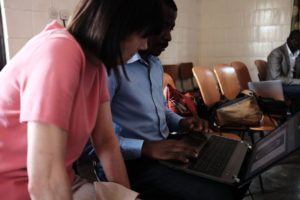 |
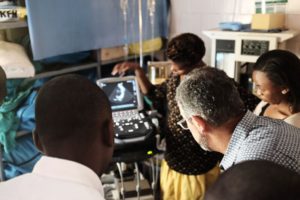 |
On September 10th, I and two other physicians from the University of Virginia landed in Kigali. As part of the CASIEF program, our one-month assignment involved training and teaching the local anesthesia residents. We planned to stay for 1 month rotating between different hospitals throughout the country, giving weekly lectures, and providing clinical instruction in the operating room. Jet lagged and with a blood caffeine level that would rival a cup of espresso, we walked over to the Kigali teaching hospital (CHUK) from the CASIEF apartment in the Nyamirambo district of Kigali. Later we learned Emmy (the CASIEF driver) nicknamed our district “Vagas Nyamirambo” as this area is somewhat the heart of Kigali, never sleeping and in constant motion. Our first day in CHUK was spent meeting the residents and giving our first day of lectures. I was both impressed with the fundamental knowledge and engagement of the residents during my stay. They seemed to have an unquenchable curiosity, firing questions during lections and in the ORs.
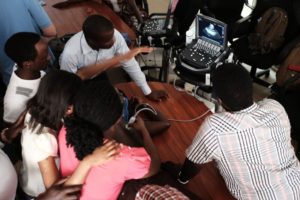 |
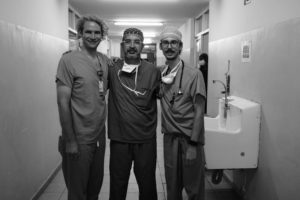 |
As we moved out of the classroom and into the OR, I think I learned as much from the residents and how they practice as they did from me. One thing I had to learn was how to adapt my teaching to their environment and resources. It took me a week or so to realize that teaching them about a medicine we at UVA would typically use in a specific situation did them no good if they did not possess that medicine. It began to make more sense to focus on how to optimize and leverage the tools they had at their disposal to improve patient care in their setting. One example was when I began discussing assessment of volume status in a patient using PPV or SVV when they do not have access to arterial catheters. We later learned that they actually had an abundance of portable ultrasounds, and we began to teach them how to assess the IVC for volume status. I think the largest and most lasting impact we made was spending two weeks teaching nothing but transthoracic cardiac ultrasound. We spent multiple days in the sim center teaching basic TTE views and IVC assessment for volume status. The moment I realized we made a lasting impact came a day prior to our departure when their chief resident Joseph showed us a TTE he performed in the ICU. He was able to diagnose the patient with severe right heart failure which was initially not suspected. Empowering the residents to use the technology available to them to make clinical diagnoses and helping them to improve their clinical decision making was what I found most rewarding about our trip.
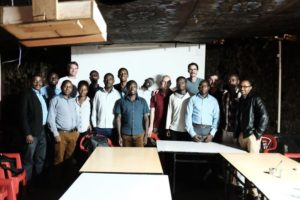 I am ever grateful to the Rwanda residents, hospital staff, and anesthesia attendings for welcoming my colleagues and I with open arms. Living and working in Rwanda is an experience that I will forever remember and cherish. I look forward to maintaining connections with the people I met and collaborating with them in the future. .
I am ever grateful to the Rwanda residents, hospital staff, and anesthesia attendings for welcoming my colleagues and I with open arms. Living and working in Rwanda is an experience that I will forever remember and cherish. I look forward to maintaining connections with the people I met and collaborating with them in the future. .

